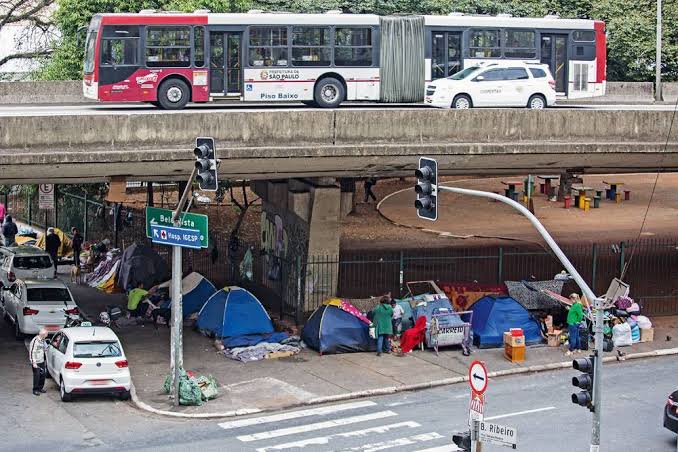SÃO PAULO, BRAZIL – The Street Dwellers Census identified 24,344 people living in this situation in the city of São Paulo in 2019. The figure is 53 percent higher than in 2015 when 15,905 people were found sleeping on sidewalks or in public shelters.

Among the people with no homes in the capital of São Paulo, 11,700 sleep in shelters and 12,600 are on sidewalks or under overpasses. The vast majority, 69.35, are colored, of which 47.6 percent are mixed race and 21.7 percent are black. Indigenous people total 1,7 percent and white people 28 percent. The great majority, 85 percent, are men. Regarding gender identity, 386 declared themselves transsexuals.
The Sé region, in the center of the city, recorded the highest concentration of the street dweller population, with 45 percent of the total. Mooca, in the eastern zone, emerged as the second region in numbers of homeless people, with 19 percent.
Growth
According to Qualitest, the company in charge of conducting the census, the number of people on the streets has grown faster than prior estimates, based on the pace of increase in recent years. At the rate of increase, this population should be 18,000 people in 2019. However, the result found in the streets exceeded this expectation by 32 percent.
The major cause pointed out by people to become homeless was family conflicts (50 percent). Other factors also featured prominently in the surveys, such as loss of employment (23 percent), alcohol and drug-related issues (33 percent), loss of housing (13 percent) and passing through the penitentiary system (three percent).
Methodology
The census engaged a team of over 200 people who traveled the city streets for nine days to collect the information. Divided into groups, the researchers toured the shelters in the late afternoon and the sidewalks during the night and dawn. All the work was georeferenced using a satellite tracking system. People were approached at 6,800 points in the city.
Services
During the introduction of results, the Secretary of Government, Mauro Ricardo, detailed the programs that serve the street dwellers in the city. They provide 17,200 places in shelter services and 3,300 in community centers.
According to the secretary, new actions are planned, such as the creation of 2,000 spaces in republics and the installation of drinking fountains and public bathrooms in several points in the capital. “To prevent people from relieving themselves in completely inadequate places,” he stressed on the need for equipment.
In addition, 1,000 jobs are being opened in work areas with a grant of between R$698 and R$1,047 per month for work such as gardening, vegetable cultivation, and maintenance of public squares.
Source: Agência Brasil

